ANDREA BICKLEY
The Library of the Flâneuse
The Library of the Flâneuse
In this studio, students will be expected to develop a critical approach to architectural design and production. Students will be confronted with complex design problems which require a close examination of both the conditions that underlie the practice of architecture (including the students’ own assumptions and beliefs) and the contexts within which and on which architectural practice acts. The development of an architectural response to these conditions and contexts, using ethical and professional judgment as well as techniques of critical analysis, will be the key objective of the studio.
The objective of this assignment is to array one’s own architectural convictions [via subjects/actors/agents] among an architectural territory (geo graphical or otherwise) while critically engaging and disengaging institutional stratifications via what have been called lines of flight. And: to represent this research in the form of design at the same time as showing design as a research path. The work will engage in a critical discussion that is crafted individually and curated collectively.
Everyone has a right to the city.
This right is restricted by current exclusionary structures which need to be
subverted. One way to do this is through breaking down the borders, the
invisible lines, that exist between people by strengthening empathy and social
relations between strangers. This is where I introduce the idea of the flâneuse
to you. The flâneuse, unlike the flâneur, acts with others to cause the
existing exclusionary structures to change, break, and distort all while
opening new lines of movement for even more others. The Library of the Flâneuse
can act as an incubator for empathy and a place for the flâneuse in all of us
to develop.
The library, in the traditional sense, is a public space which, in addition to being a repository of knowledge accessible to all, has the potential for transformative power through its ability to simultaneously act as a place of safety, inclusion, learning, and controversy. In the Library of the Flâneuse, the readers are faced with books they may not agree with or books whose life story differs from theirs. These books are specifically chosen to challenge the existing biases in society to reveal truths. The books in this library are human books from all walks of life with stories of betrayal, forgiveness, love, and hope.
The interactions between book and reader are carefully curated to strengthen social relations and foster empathy. Essentially, constricted spaces and frames bring book and reader into proximity and this proximity spawns’ empathy. As such, the dioramic architecture of the Library of the Flâneuse isolates and intensifies a reader’s interactions with a book.
In this library, the most daunting experience for book and reader is the interaction without barriers. And this is where the underlying goal of the Library of the Flâneuse rests. The Library of the Flâneuse is one step towards breaking down barriers between people, one step towards crossing those invisible lines that allow the current exclusionary structures to exist. It is at this point that the interactions that occur in the Library of the Flâneuse can have an impact on the city beyond its walls.
The library, in the traditional sense, is a public space which, in addition to being a repository of knowledge accessible to all, has the potential for transformative power through its ability to simultaneously act as a place of safety, inclusion, learning, and controversy. In the Library of the Flâneuse, the readers are faced with books they may not agree with or books whose life story differs from theirs. These books are specifically chosen to challenge the existing biases in society to reveal truths. The books in this library are human books from all walks of life with stories of betrayal, forgiveness, love, and hope.
The interactions between book and reader are carefully curated to strengthen social relations and foster empathy. Essentially, constricted spaces and frames bring book and reader into proximity and this proximity spawns’ empathy. As such, the dioramic architecture of the Library of the Flâneuse isolates and intensifies a reader’s interactions with a book.
In this library, the most daunting experience for book and reader is the interaction without barriers. And this is where the underlying goal of the Library of the Flâneuse rests. The Library of the Flâneuse is one step towards breaking down barriers between people, one step towards crossing those invisible lines that allow the current exclusionary structures to exist. It is at this point that the interactions that occur in the Library of the Flâneuse can have an impact on the city beyond its walls.
This model is, at its core, a superimposition of layers of information. Except instead of superimposing social, economic, political, and cultural information, the model’s information comes in the form of material, texture, colour, density, depth, and technique.
The connections between actants and areas of focus deform the material, while the number and strength of connections dictate the level of deformation. The resulting overall form of the model suggests a natural landscape while the changes in material density, specifically the unraveling, are representative of the current state of the world. However, that world can be rebuilt and reshaped, just as the actants and areas of focus act upon each other to reshape the fabric.
![]()
The connections between actants and areas of focus deform the material, while the number and strength of connections dictate the level of deformation. The resulting overall form of the model suggests a natural landscape while the changes in material density, specifically the unraveling, are representative of the current state of the world. However, that world can be rebuilt and reshaped, just as the actants and areas of focus act upon each other to reshape the fabric.
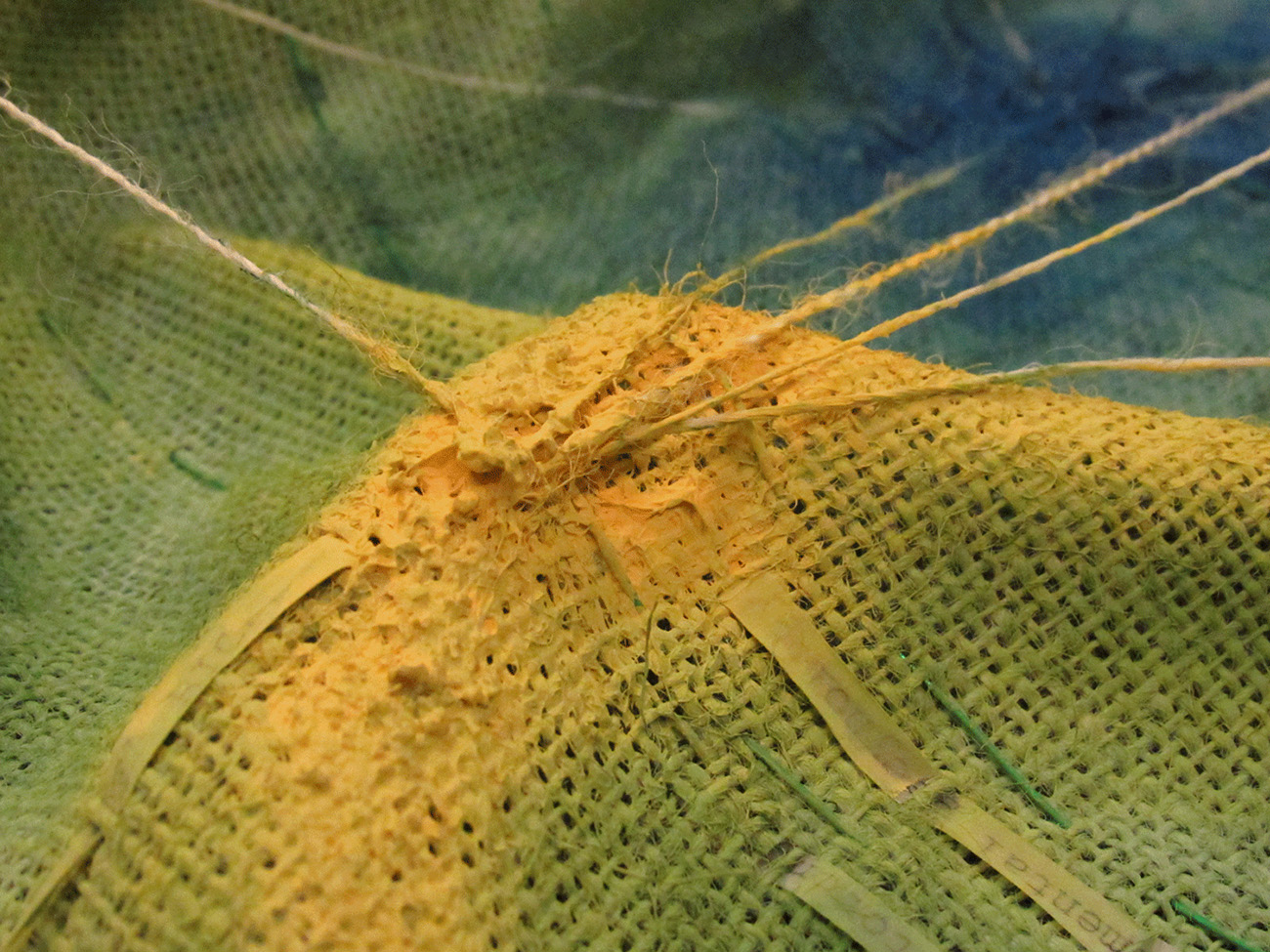
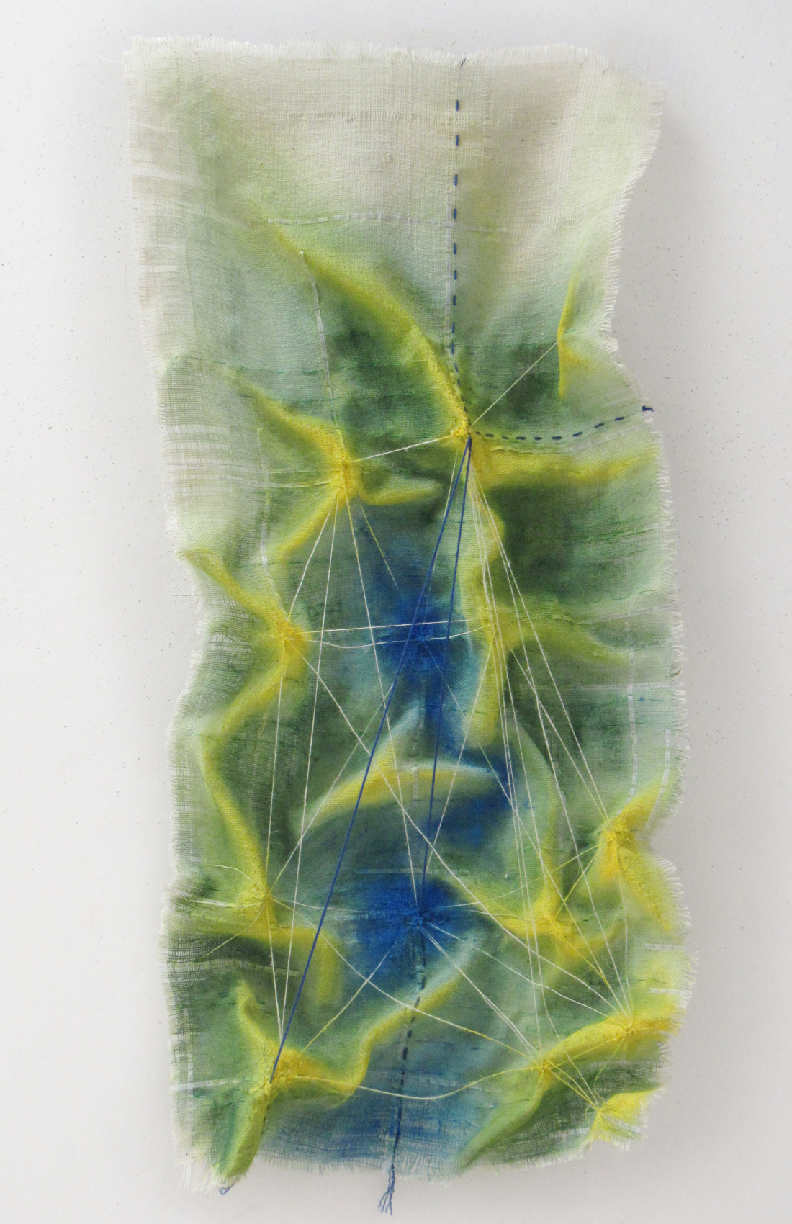

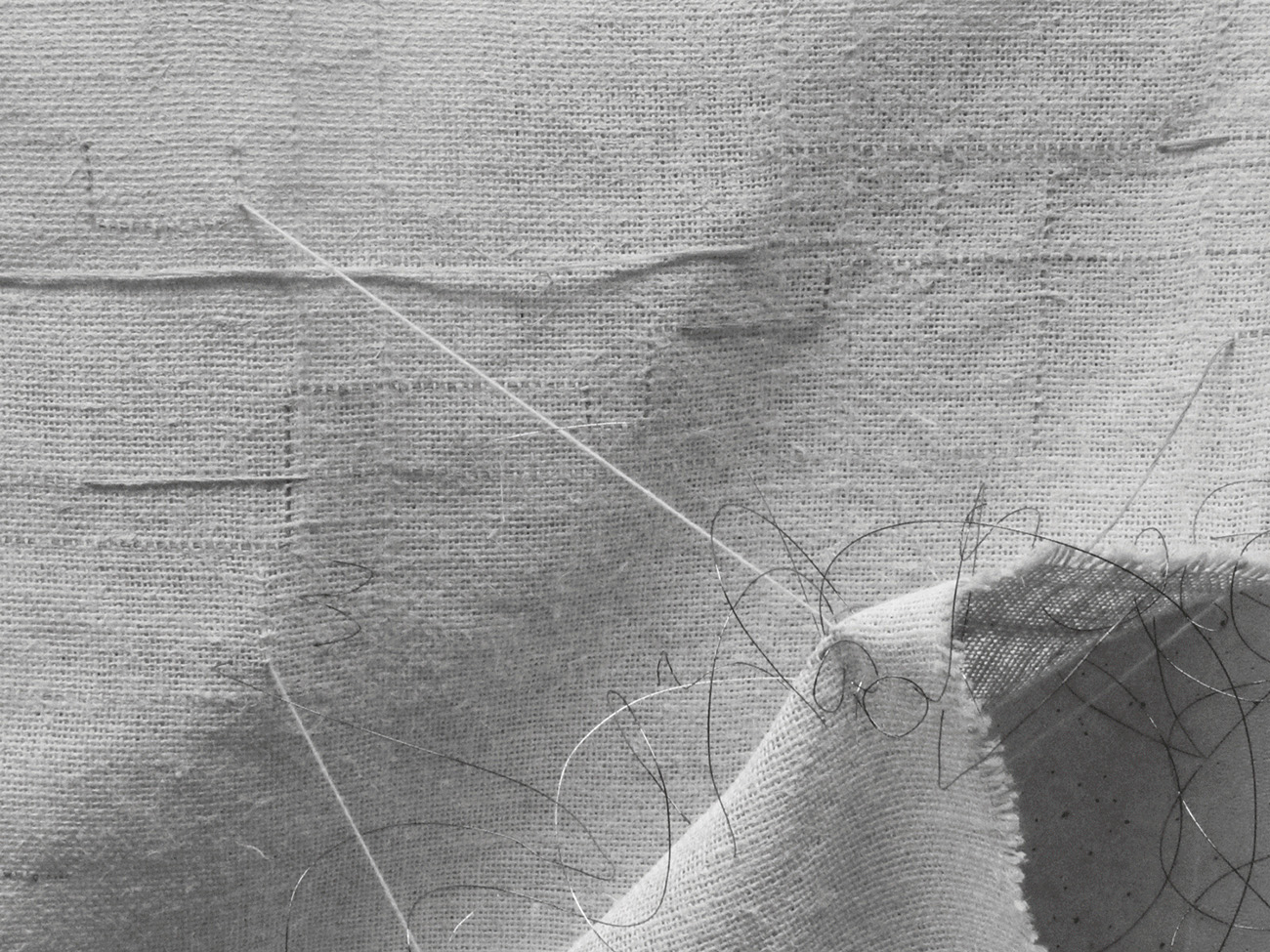
The flâneuse is not restricted to interact with the city in the same way as the privileged nineteenth century flâneur who only lightly touches the city through his aimless wandering. The privileged flâneur is served by the existing structure and, in return, works to reinforce this structure making it more opaque so as to mask its flaws. However, as a flâneuse acting with others, you can move over, around, and under the existing structure causing it to change, break, and distort. The actions of the flâneuse reveal the flaws in the structure all while opening new lines of movement for even more others.
This model, as a continuation of the idea explored in the previous project, is used to illustrate the movement of the flâneuse.
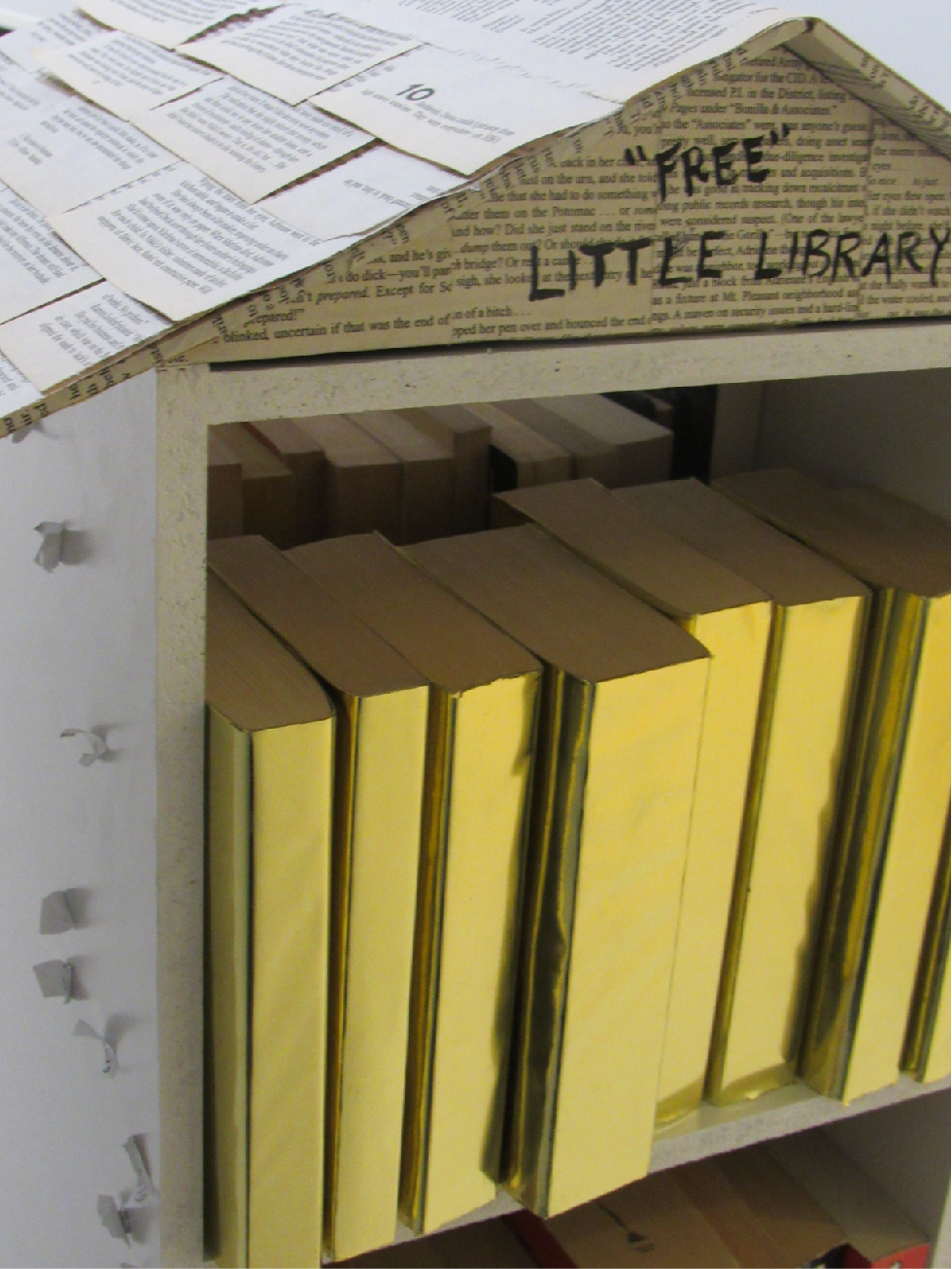
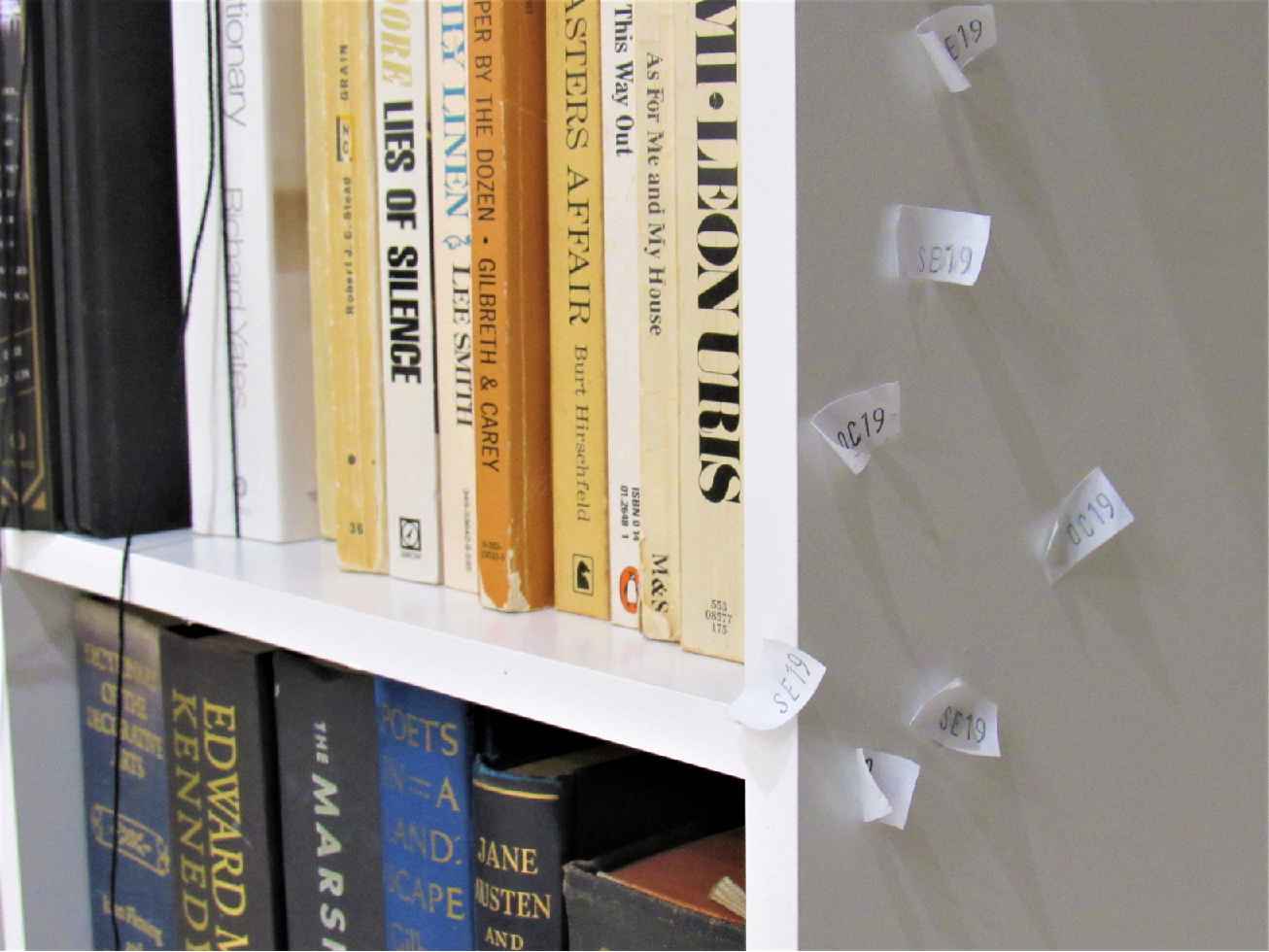
Everyone has the right to the city. By extension, everyone has
the right to the library and the books it houses. The library is a public space
which, in addition to being a repository of knowledge accessible to all, has
the potential for supporting transformative power through its ability to
simultaneously act as a place of safety, inclusion, learning, and controversy.
However, some libraries are not quite as accessible. The “libraries” (and I use
the term lightly) of Chicago have varying degrees of access.
The Johnson Library Collection of Stony Island Arts Bank is a museum NOT a library. You cannot interact with the books, it’s as if they are glued to the shelves.
Even worse are the books housed in buildings so opulent you feel as if you do not deserve to touch them.
However, go for a short walk in the neighbourhood.
At the Free Little Library in the community garden you can freely take a book. Take a book. Leave a book.
Now go to the Harold Washington Public Library. The fancy hardcover books of the Special Collections Reading Room sit waiting for you. Just remember to return them.
Or go to the non-fiction section and pick up one of the books you saw but could not touch while visiting the Johnson Library Collection. Perhaps this library, like so many others, has a discard pile of books you can take home indefinitely.
Now return to the Chicago Architecture Biennial housed in the Chicago Cultural Centre, what was Chicago’s first public library. The books there are tethered to the exhibitions through literal rope or a friendly sticker with a polite “Please return to original location” reminder.
The “Free” Little Library demonstrates these varying degrees of access.
![]()
The Johnson Library Collection of Stony Island Arts Bank is a museum NOT a library. You cannot interact with the books, it’s as if they are glued to the shelves.
Even worse are the books housed in buildings so opulent you feel as if you do not deserve to touch them.
However, go for a short walk in the neighbourhood.
At the Free Little Library in the community garden you can freely take a book. Take a book. Leave a book.
Now go to the Harold Washington Public Library. The fancy hardcover books of the Special Collections Reading Room sit waiting for you. Just remember to return them.
Or go to the non-fiction section and pick up one of the books you saw but could not touch while visiting the Johnson Library Collection. Perhaps this library, like so many others, has a discard pile of books you can take home indefinitely.
Now return to the Chicago Architecture Biennial housed in the Chicago Cultural Centre, what was Chicago’s first public library. The books there are tethered to the exhibitions through literal rope or a friendly sticker with a polite “Please return to original location” reminder.
The “Free” Little Library demonstrates these varying degrees of access.

The
Library of the Flâneuse.
In the Library of the Flâneuse, the readers are faced with books they may not agree with or books whose life story differs from theirs. These books are specifically chosen to challenge the existing biases in society to reveal truths. The books in this library are human books from all walks of life with stories of betrayal, forgiveness, love, and hope.
The interactions between book and reader are carefully curated to strengthen social relations and foster empathy. Essentially, constricted spaces and frames bring book and reader into proximity and this proximity spawns empathy. As such, the dioramic architecture of the Library of the Flâneuse isolates and intensifies a reader’s interactions with a book.
In this library, the most daunting experience for book and reader is the interaction without barriers. And this is where the underlying goal of the Library of the Flâneuse rests. The Library of the Flâneuse is one step towards breaking down barriers between people, one step towards crossing those invisible lines that allow the current exclusionary structures to exist. It is at this point that the interactions that occur in the Library of the Flâneuse can have an impact on the city beyond its walls.
